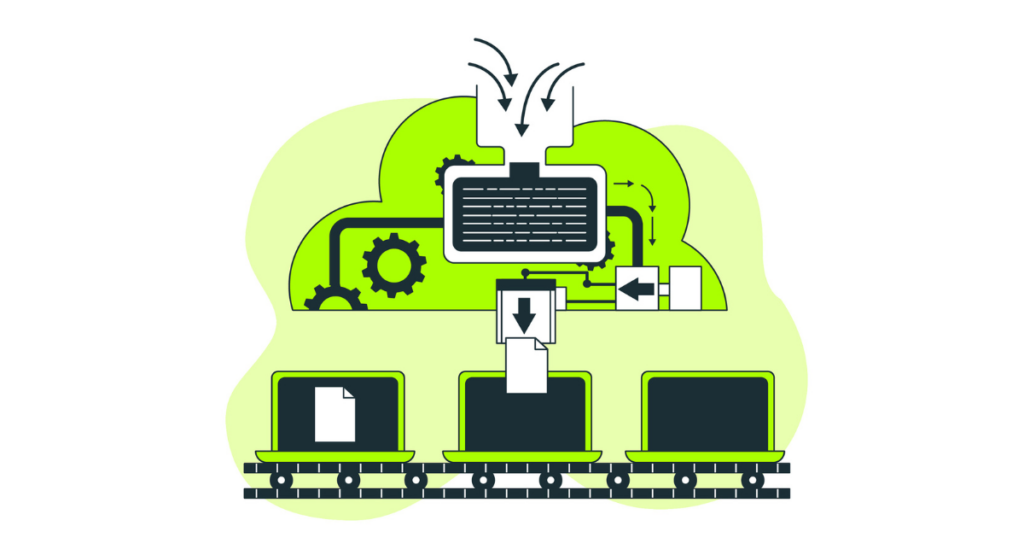Testing, in its dynamic multitude of software development, assures that the applications are of quality and functionality. Test automation frameworks are very paramount tools for any developer and quality assurance team that seek to make their testing processes efficient.
Basically, the test automation framework is a set of guidelines or rules that will be used to create and design test cases.
These frameworks not only reduce manual testing efforts but also provide a structured and reusable way for test automation, hence consistency and reliability.
However, the choice of framework might be tricky because it is based on several factors: the type of platform for the application, the language compatibility, integration ease, and special requirements of the project.
The blog provides details on some of the most well-known test automation frameworks, including Selenium, Appium, Cypress, and Robot Framework, giving their features in detail to help one decide which might suit the needs best for the project.
Overview of Test Automation Frameworks

Selenium
Selenium is an exceptionally fine tool for automating web browsers. It supports multiple languages like Java, C#, Python, or Ruby, among others which helps it fit into various development environments.
Selenium WebDriver is part of Selenium and communicates directly with the browser in order to control it at a lower level; therefore, it improves test accuracy and efficiency.
Because of its high diffusion, the Selenium community is huge and has a lot of resources and integrations to count on.
Appium
Appium is an open-source automation tool targeted at mobile applications. It supports both Android and iOS, preserving it as a versatile choice while testing any mobile application.
Appium is designed to act as a server that communicates with the mobile application under test using vendor-provided automation frameworks.
Hence it does not require any modifications in the app being tested, thereby definitely making the tester's life easier since he can use the same code for tests on Android and iOS.
Cypress
Cypress is a modern test automation framework designed specifically for the web. It offers a unique approach by running in the same run-loop as the browser, which provides it faster execution times and more consistent results compared to Selenium.
Cypress also boasts built-in features that make writing tests easier, such as automatic waiting for elements and real-time reloads, enhancing test development efficiency.
ContextQA
ContextQA is not as popular but an effective framework built for behaviour-driven development.
Hence, it is perfect for teams that place a great deal of emphasis on the collaboration between developers, QA, and non-technical stakeholders to ensure everyone understands what each test scenario does clearly.
Factors to Consider When Choosing a Test Automation Framework
Programming Language Support
Another key consideration in selecting a Test Automation Framework would be the supported programming languages. The chosen one must be based upon the technology stack already in use and the skill set of your development team.
Ensuite, if compatibility between these languages is not ensured, extra time will be spent on training and, hence, probably project delay.
Integration Capabilities
It's because of its ability to integrate with other tools Continuous-Integration/Continuous-Deployment pipelines, test management tools, and Version Control Systems that a test automation framework is so powerful.
In this way, it provides a much smoother, an increased pace in workflows and faster feedback loops critical in Agile development practices.
Community Support
An active community is another thing that you should look out for when choosing a framework. The active community will not only help you troubleshoot bugs but also continue to update and improve the framework with updates, plugins, and extensions.
It further opens up access to a lot of community-created resources like tutorials, forums, and webinars, which turn out to be extremely useful during the course of learning and debugging.
Test Execution Speed
Another critical factor is the test execution speed. Faster tests mean a faster development pace, which, in today's fast-moving environments, is essential for software delivery.
Frameworks providing parallel test execution or making tests less flaky are very valuable in improving the speed and reliability of your testing process.
Comparison of Popular Test Automation Frameworks

Features of Selenium
Selenium is ultra-famous due to its ability to automate browsers a function dancing with web application testing. It does support a lot of programming languages, including stacks in Java, Python, and C#, providing flexibility for development teams.
Selenium WebDriver is a part of the Selenium project that makes direct calls to the browser. It does this by allowing tests to be written in such a way that they are agnostic to the underlying technology of the application being tested.
Another important feature of Selenium Grid is that tests can be executed on different browsers and environments simultaneously, which drastically reduces test execution time.
Benefits of Appium
Appium shines when it comes to mobile application testing, both for Android and iOS platforms. It's an open-source tool that allows the use of familiar web development languages such as Javascript and Ruby.
Appium functions on the philosophy that testing native apps shouldn’t require including an SDK or recompiling your app.
And because it uses a standard API across all platforms, there’s no need to rewrite or restructure tests for multiple environments, making it highly efficient for cross-platform app testing.
It’s also noteworthy that Appium integrates seamlessly with Selenium WebDriver, further extending its capabilities in automation.
Key Aspects of Cypress
Cypress is a modern test automation framework designed specifically for today’s web. It operates directly within the browser, enabling real-time, interactive tests with live reloads for a smooth testing experience.
Unlike Selenium, Cypress automatically waits for commands and assertions before moving on. This in-built waiting mechanism reduces the flakiness and instability often encountered in asynchronous testing.
For developers, Cypress offers excellent debugging capabilities with easy access to every object, DOM element, and the lifecycle of each test for simplified troubleshooting.
Use Cases and Advantages of ContextQA
ContextQA is a lesser-known but powerful framework geared towards context-driven testing scenarios. Its key advantage lies in its ability to adapt tests based on the runtime context, which can include variations in data, user behaviour, or environment setups.
This makes it particularly useful for complex, dynamic applications where predefined test scripts may fail due to unforeseen changes or interactions.
Typical use cases for ContextQA include applications that involve heavy user interactions, multi-tenant environments, or extensive personalization, where conventional testing methods might struggle to maintain relevance or accuracy.
How to Choose the Right Test Automation Framework
Assessing Project Requirements
First, test automation framework selection involves a closer look at the requirements of the project. Keep in mind the application platform, technology stack, and needs of your software.
For instance, in the case of a mobile application, Appium may work for it; for testing complex web applications, it should be Selenium or Cypress.
This will ensure that the capabilities of the framework cater to your project's needs for effective and efficient testing.
Conducting a Proof of Concept (POC)
Before jumping wholeheartedly into a test automation framework, it is best to run a Proof of Concept. What this means is to take a very small, easily manageable part of your application and try to automate some of the tests using a framework you consider as a choice.
The result of the PoC will be very valuable in terms of understanding the framework's compatibility, usability, integration capabilities, and performance if put under real test conditions.
This step will reduce the possibilities of risks associated with the adoption of a new framework and guarantee that it suits your project requirements.
Consulting with DID Members
Finally, consulting with your development and testing team members about their preferences and expertise can be critical.
Since they are the ones who will interact with the framework daily, their input can be vital in determining which framework will best suit the team's skills and improve productivity.
Additionally, consider the learning curve and the support community around the framework to ensure ongoing support and updates. Involvement and agreement from the team not only facilitate smoother integration and adoption but also enhance the overall efficiency of your testing strategy.
Book a Demo and experience ContextQA testing platform in action with a complimentary, no-obligation session tailored to your business needs.
Conclusion: Making an Informed Decision
Test automation frameworks are one of the decision-making aspects for efficient and successful software testing. Each has some unique features for which they are used.
The informed decision making, therefore, will depend a lot on the specific requirements of the projects. Finally:
- Project Requirements: The understanding of the exact requirements of your project like environment, programming languages used, and the nature of applications under test shall lead your decision.
For example, Selenium is outstanding for web applications, while Appium is ideal for mobile apps.
-Ease of Implementation: How easy is it to set up the framework, write, and maintain tests? Some, like Cypress, are much easier to set up and intentionally designed for ease.
- Community and Support: A strong community and good support can greatly ease the process of implementing and solving issues with a test automation framework. Selenium and Robot Framework, for example, boast extensive communities.
- Cost Considerations: Evaluate the cost of implementing and maintaining each framework, including training costs for your team and any licensing fees if applicable.
In summary, no single framework is the best for all scenarios. It’s essential to evaluate the specifics of your project and team capabilities when choosing a test automation framework.
Leveraging the strengths of the targeted framework while considering organizational constraints will help ensure a successful automation strategy.
Additional Resources and Further Reading
There are many more resources one can avail to get deeper into the test automation frameworks and improve their skills. Consider the following:
- Official Documentation: From Selenium to Appium, Cypress, and Robot Framework, every framework is well-documented by the creators themselves in comprehensive guides a developer must use to reach mastery.
- Online Courses: Plenty of courses are relevant in this respect at Udemy, Coursera, and Pluralsight, led by top experts in the industry, both for freshers and experienced programmers.
- Books: Books, such as "Test Automation Engineer" by Andrew Pollner and "Selenium WebDriver Practical Guide" by Satya Avasarala, are some good reads which will let you into the comprehensive aspects of the automation framework.
- Community Forums and Blogs: Engaging with community forums and following blogs dedicated to software testing can provide real-time insights and problem-solving techniques shared by professional testers worldwide.
These resources are instrumental in staying updated on the latest trends and obtaining practical advice on utilizing various test automation frameworks effectively.
Also Read - React vs React Native: When to use which?
